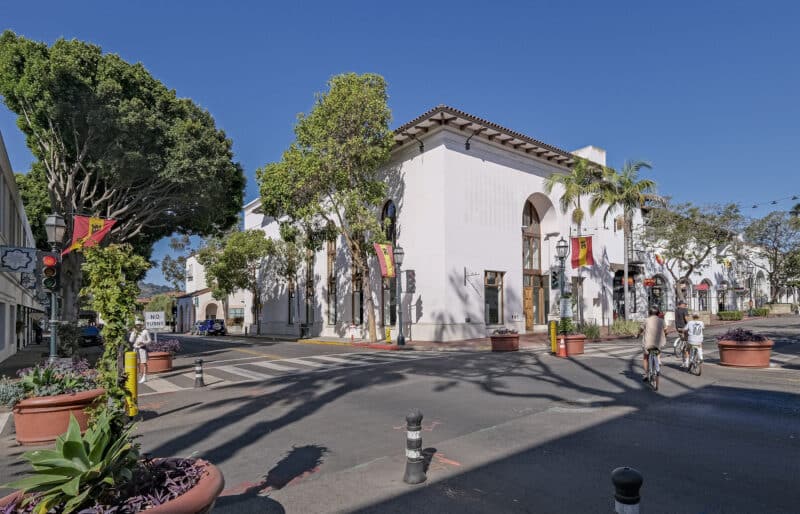
A high note for downtown, the Music Academy of the West has purchased one of the largest buildings on State Street and announced plans to develop a music education center that will also be used for performances. The building is just one block from the Lobero Theatre and in the Historic Arts District, located at 901 State Street on the corner of Canon Perdido, and was previously owned by Ray Mahboob.
A landmark commitment of $20 million from Cheryl Goldberg, founding contributor to the Music Academy’s Music Education Center, in honor of her late husband Michael Goldberg, will facilitate the purchase of the property and the creation of the education center. Michael Goldberg is a distinguished former executive of Berkshire Hathaway Inc.
“We are profoundly grateful to Cheryl Goldberg for bringing this vision to life,” said Shauna Quill, President & CEO of the Music Academy. “This center represents a bold investment in Santa Barbara’s vibrant cultural landscape. By establishing a permanent downtown presence, we’re deepening our roots and ensuring that the transformative power of music reaches every corner of our city.”
The ongoing revitalization of the downtown corridor has seen many improvements in the last few months, including the formation of a new Community Business Improvement District called the Downtown Santa Barbara Improvement Association (DSBIA).
“In my official capacity I am thrilled to see the Music Academy of the West locate downtown and bring both their programming and educational services,” commented David de L’Arbre President of DSBIA. “I think it’s a sign of the resurgence and confidence in downtown… Downtown Santa Barbara’s reputation has been built around the unique combination of culture and art.”
The downtown expansion by MAW represents a pivotal moment for the organization, as it approaches its 80th anniversary, in both the institution’s evolution and Santa Barbara’s history.
“This gift honors not only the Music Academy’s extraordinary mission and its desire to increase access to music education in Santa Barbara,” said Cheryl Goldberg. “It is also a tribute to the memory of my beloved husband, Michael, whose legacy lives on through the countless lives this center will touch.”
The Goldbergs relocated from Omaha, Nebraska to Santa Barbara in 2002, intending to make it their permanent home.
“On behalf of our Board of Directors and the Music Academy, I want to express our gratitude to Cheryl Goldberg for this extraordinary act of generosity,” said Danner Schefler, Chair of the Music Academy Board of Directors. “Her gift creates a living memorial to Michael’s legacy—one that will inspire and benefit generations to come. This center ensures that their shared vision of community, excellence, and artistic expression will continue to shape the spirit and character of Santa Barbara.”
Michael Goldberg’s leadership at Berkshire Hathaway exemplified the same values of excellence and community impact that this gift represents. Warren Buffett, the company’s Chairman and CEO, in a statement reflecting on Michael’s legacy shared, “Mike’s role at Berkshire was monumental. I had made many mistakes in staffing the insurance business and he not only corrected them—he single-handedly created the world’s best team. Berkshire would be nothing like it is today without Mike.”
The Music Academy of the West has long been a foundation of Santa Barbara’s identity, most notably through its renowned Summer Music Festival & School, which brings together 150 talented fellows from around the world for immersive training and 120+ public performances. The festival blends world-class orchestral and vocal instruction with dynamic programming, drawing thousands of attendees and shaping the next generation of music leaders. The 2025 Music Festival & School begins its public performances on Wednesday, June 18th and runs through August 9th.
“This is a defining moment for Santa Barbara’s future,” said Randy Rowse, Mayor of Santa Barbara. “The Music Academy’s commitment to establishing a downtown music center will create ripple effects for generations—energizing our historic core, attracting visitors and residents alike, and cementing our identity as a city where the arts don’t just survive, but flourish.”
